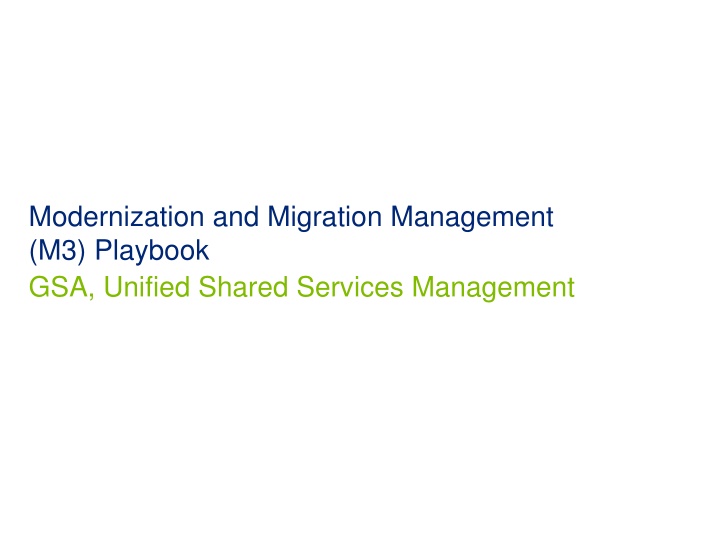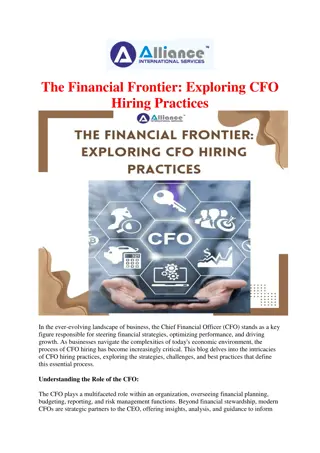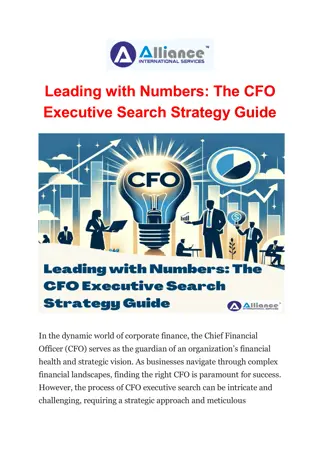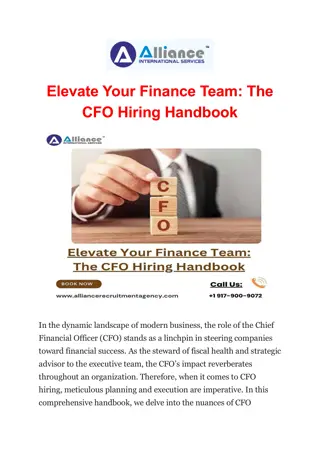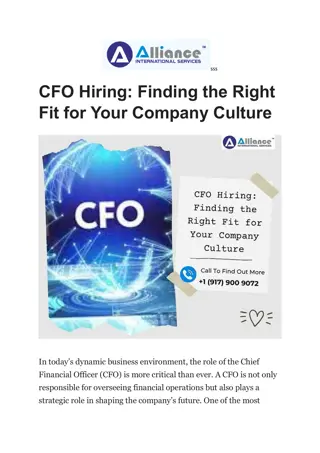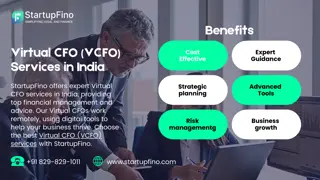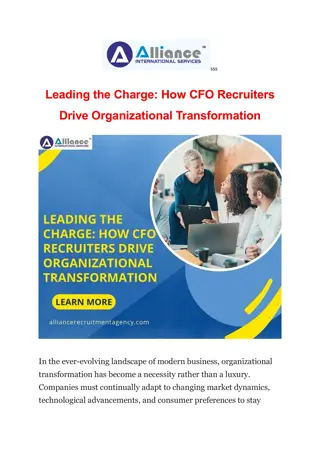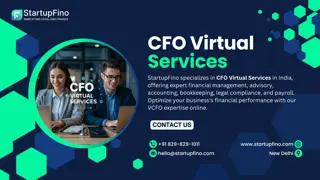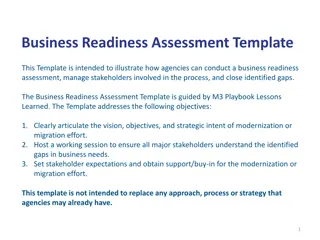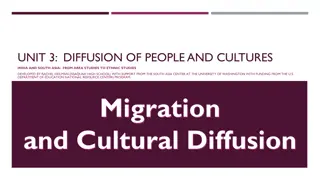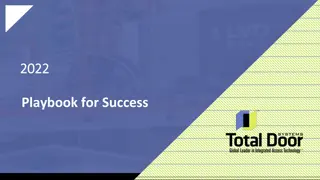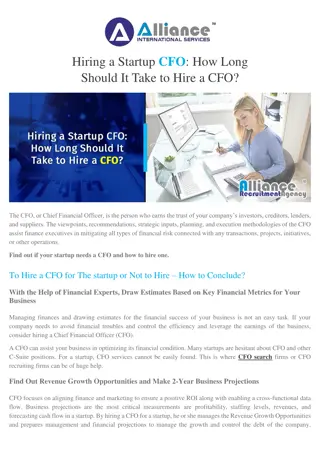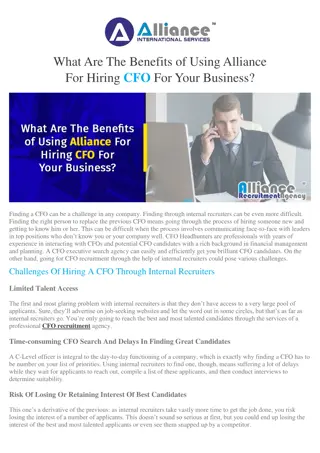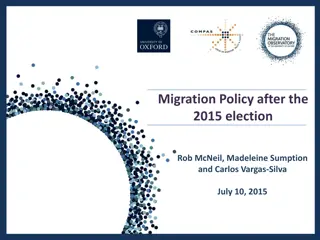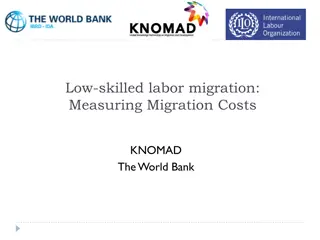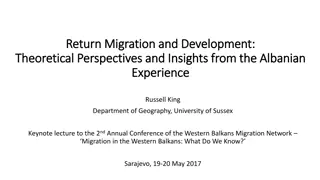Modernization and Migration Management Playbook for CFO Agencies
Modernization and Migration Management (M3) is a framework designed to assist CFO Act agencies in achieving successful outcomes and minimizing risks during administrative system and service modernizations and migrations. The M3 Playbook provides guidance, tools, and templates based on best practices to enhance the likelihood of success in modernization projects. It divides modernization processes into six distinct phases, each with specific objectives and recommended activities for completion by the customer and provider organizations. The framework is overseen by an Investment Review Board, which conducts formal reviews to evaluate migration risk and offer recommendations throughout the migration lifecycle. Engagement with the board allows for progress assessment, identification of risk areas, and improvement opportunities in migration planning and execution. The Investment Review Process involves various key participants tailored for each investment, including CFO Act agency customers and providers, USSM executives, OMB representatives, the Shared Services Governance Board, and lines of business Managing Partners with expertise in large-scale modernizations and migrations.
Uploaded on Mar 15, 2025 | 1 Views
Download Presentation

Please find below an Image/Link to download the presentation.
The content on the website is provided AS IS for your information and personal use only. It may not be sold, licensed, or shared on other websites without obtaining consent from the author.If you encounter any issues during the download, it is possible that the publisher has removed the file from their server.
You are allowed to download the files provided on this website for personal or commercial use, subject to the condition that they are used lawfully. All files are the property of their respective owners.
The content on the website is provided AS IS for your information and personal use only. It may not be sold, licensed, or shared on other websites without obtaining consent from the author.
E N D
Presentation Transcript
Modernization and Migration Management (M3) Playbook GSA, Unified Shared Services Management
What is the M3 Framework? Modernization and Migration Management (M3) is a framework designed to help CFO Act agencies achieve successful outcomes and reduce risk during administrative system and/or service modernizations and migrations. It segments modernizations and migrations into six discrete phases, each of which includes a series of objectives and recommended activities that should be completed by the customer and/or provider organization based on the phase objectives. The Playbook was developed to help customer and provider organizations apply the M3 Framework. The Playbook is not prescriptive, but provides guidance, tools, and templates, based on best practice, to help CFO Act agency customers and providers improve the likelihood of successful outcomes of their modernization and migration projects. Customers and providers are encouraged to leverage their own tools and templates to satisfy the expected outcomes. Refer to USSM M3 for detailed information on the M3 Framework and the Playbook. The M3 framework is overseen by the Investment Review Process mandatory formal reviews for CFO Act agencies conducted by an Investment Review Board (IRB) to: 1) evaluate migration risk and make recommendations to customer and provider organizations throughout the migration lifecycle to mitigate potential hurdles to success and 2) assess outcomes at each phase and make recommendations to OMB on budgeting for modernization and migration investments. The degree of oversight varies based on the program s level of risk as determined by the overall USSM Risk Assessment, which is determined from applying the USSM Risk Assessment Tool. Engagement with the IRB presents opportunities for the IRB and customer and provider organizations to understand progress made, assess critical risk areas of the modernization or migration, and identify opportunities for improvement based on the sufficiency, comprehensiveness, and reasonableness of migration planning and execution. Who will be involved in the Investment Review Process? The participants on an IRB will be tailored for each investment, but will consist of the CFO Act agency customer and provider, executives from USSM, OMB (Resource Management Office), the Shared Services Governance Board, and lines of business Managing Partners with expertise and experience in large scale modernizations and migrations.
How to Read an Activity Description Phase: Indicates the phase in which the activity occurs Objective: Provides the overall objective of the activity Responsible Party: Indicates the party/parties responsible for the activity Activities: Describes the step-by- step activities that the program team should conduct in order to achieve the intended objective Workstreams: Indicates the workstream in which the activity occurs: PMO (dark green), Change Management (light blue), Technology (light green), or Process & Service Delivery (dark blue) Inputs: Lists inputs that will be needed to conduct the activities Stakeholders Describes who is typically involved in the activities Outputs: Lists the required outputs at the end of the activities Best Practice: Provides best practice from previous migrations for consideration as activities are conducted
Frequently Used Terms A document (usually created in a prior activity) or an event required by that process before a process proceeds Input A document or event that is produced by an activity to facilitate robust planning and migration activities Output An outcome that should be achieved by the time a phase is complete Exit Outcome A supporting tool for agencies to evaluate their plans and program artifacts against leading practices; guidance items can be used to guide the content of organization- specific documentation when not using a template Guidance Items A document that contains required fields and details for an output Template A summary presentation that must be submitted at the end of a phase tollgate with key components to inform risk review and budget/funding decisions for the migration Tollgate Review Discussions
Modernization and Migration Management (M3) Playbook Overview The Playbook is not prescriptive it is guidance for customer and provider organizations to help improve the successful outcomes of modernizations and migrations. Customers and providers are encouraged to tailor the Playbook to leverage their own tools and templates to satisfy the expected outcomes. Tollgate 0. Assessment 1. Readiness 2. Selection 3. Engagement 4. Migration 5. Operations Investment Review Process Build a vision and Major Information Technology (IT) Business Case for the migration Prepare the customer organization for the modernization effort and define capabilities Conduct due diligence to select the provider based on capabilities and desired target end state Conduct detailed planning through a Fit-Gap Assessment and finalize the migration and Operations and Maintenance (O&M) approach and costs Configure, test, and deploy the new system, concept of operations, and workforce design Deliver services and conduct continuous process improvement Objective Define Vision and Operational End State Develop Major IT Business Case Stand-up Program Management Office (PMO) Define migration scope of services and program management processes Establish customer risk processes Assess data quality Assess different providers to understand which can best meet the scope of services requirements Select provider for Engagement and fit-gap analysis Begin preparing the organization for change Continue cleansing data Conduct a Fit-Gap Assessment to understand how the requirements will be met and where tailored solutions will be required Define Migration Approach and roadmap Integrate PMO processes between the customer and provider Configure, test, and deploy the new solution and concept of operations Migrate in-scope processes and design the transformed organization for the future state environment Monitor the success of the migration and move into operations Continue training and communications Conduct process improvement and customer care activities Key Activities* Major IT Business Case Approved Provider Selected Mitigation Plans in Place for Major Risks/Issues Schedule Updated Data Cleansing Commenced Lifecycle Cost Estimate Updated for Engagement, Migration, and O&M Communications to Stakeholders Delivered Fit-Gap Assessment Completed PMO and Governance Processes Integrated Lifecycle Cost Estimate Updated for Migration and O&M Migration Approach Finalized Master Schedule Drafted SLAs for Migration and O&M defined Go/No-Go Criteria Approved Go/No-Go Criteria Met to Deploy Solution Post-migration Performance Metrics Reported Lessons Learned Developed PMO and Governance Structure Defined Resources On Boarded Mitigation Plans in Place for Major Risks/Issues Initial Schedule Defined Lifecycle Cost Estimate Developed Change Management Strategies Defined Data Quality Assessed Procurement Strategy Defined Business Capabilities Defined Exit Outcomes * Agencies purchasing transaction processing services only will customize the M3 Playbook using the USSM M3 Tailoring Guide to identify relevant activities and outputs within each Phase of the M3 Framework.
M3 Playbook Outline Responsible Party: Customer Provider Shared Investment Review Process Tollgate Program Health Assessment Phase 1: Readiness Phase 2: Selection Phase 3: Engagement Phase 4: Migration Phase 5: Operations Phase 0: Assessment 0.1 Define Vision and Operational End State 0.2 Develop Major IT Business Case 1.1 Establish Initial Customer PMO Processes 1.2 Establish Customer Governance Structure and Processes 1.3 Establish Customer Risk Processes 1.4 Conduct Procurement Planning 1.5 Develop Lifecycle Cost in the Business Case 1.6 Define Benefits of the Program 2.1 Select Provider for Engagement 2.1a Select Provider for Engagement (Resources and Guidance) 2.1b Select Provider for Engagement Market Research and Provider Selection Process 2.2 Update Lifecycle Cost Estimate for Engagement, Migration, and O&M 2.3 Monitor and Control Program Execution 2.4 Maintain and Execute Risk Processes 3.1 Integrate PMO Structures 3.2 Integrate Governance Structures 3.3 Update and Maintain Procurement Plans 3.4 Monitor and Control Program Execution 3.5 Maintain and Execute Risk Processes 3.6 Finalize Migration Approach 3.7 Update Lifecycle Cost Estimate for Migration and O&M 4.1 Monitor and Control Program Execution 4.2 Maintain and Execute Risk Processes 4.3 Develop Integrated O&M Governance Process 4.4 Prepare O&M Scope of Services and Contracts 4.5 Assess Readiness for Go-Live 4.6 Update Lifecycle Cost Estimate for O&M 5.1 Review Performance against Expected Benefits 5.2 Collect Lessons Learned 5.3 Implement Integrated O&M Governance Program Management 1.7 Assess Change Management Approach 1.8 Understand As-Is Workforce 2.5 Assess Labor Relations Outreach 2.6 Develop Change Management Plan 3.8 Engage with Labor Relations 3.9 Execute Change Management Plan 3.10 Develop Training Plan 4.7 Design Target State Organization 4.8 Execute Workforce Transition and Prepare for Go-Live 4.9 Execute Training for Go-Live 4.10 Execute Labor Relations Strategy 5.4 Support Stabilization and Perform Change Management Workforce, Organization, & Stakeholders 1.9 Define As-Is and Initial Target State Systems Environments 1.10 Plan and Conduct Initial Data Quality Assessment 2.7 Conduct Initial Data Cleansing Activities 3.11 Finalize Requirements 3.12 Conduct Requirements Fit-Gap Assessment 3.13 Finalize Target State Systems Environment 3.14 Develop Integrated Technical Strategy 3.15 Prepare Data for Mock Conversions (Data Cleansing, Data Mapping) 4.11 Conduct Security and Privacy Reviews 4.12 Define Roles and User Access 4.13 Design, Configure, and Develop Systems 4.14 Design and Develop Interfaces 4.15 Design and Develop Reports 4.16 Design and Develop Data Warehouse 4.17 Conduct Mock Conversions 4.18 Test Systems and Processes 4.19 Develop and Execute Cutover Plan for Go-Live 5.5 Maintain Applications Post Go- Live 5.6 Decommission Legacy Systems Technology 1.11 Understand As-Is Business Processes 1.12 Develop Initial Target State Concept of Operations 1.13 Define Scope of Services, Document Initial Business Capabilities and Define Mission Critical Needs 3.16 Finalize Target State Concept of Operations 3.17 Define Integrated Contact Center Structure 3.18 Define Service Level Agreements 4.20 Finalize Service Level Agreements 4.21 Design Target State Processes 5.7 Conduct Continuous Process Improvement 5.8 Manage Integrated Contact Center 5.9 Monitor and Update Service Level Agreements Process & Service Delivery
0 1 2 3 4 5 Phase 2 Summary and Documentation Phase Objective Conduct due diligence to identify and select the provider based on requirements and initial target end state Responsible Party: Customer Provider Shared Workforce, Organization, & Stakeholders Program Management Process & Service Delivery Technology Phase 2: Selection 2.1 Select Provider for Engagement 2.2 Update Lifecycle Cost Estimate for Engagement, Migration, and O&M 2.3 Monitor and Control Program Execution 2.4 Maintain and Execute Risk Processes 2.5 Assess Labor Relations Outreach 2.6 Develop Change Management Plan 2.7 Conduct Initial Data Cleansing Activities Activities Phase Documentation The following documentation is developed during Phase 2 and is used to inform the Phase 2 Tollgate Review discussion. Agencies purchasing transaction processing services only will identify relevant activities and artifacts for their project using the USSM M3 Tailoring Guide. Phase 2 Documentation Information Contained in Tollgate Review Discussion Provider Assessment Report (Federal Only) Engagement Phase IAA (Federal Only) Updated Data Cleansing Plan Draft RFP (Commercial Only) USSM Risk Assessment Tool Business Needs Workbook Evaluation Criteria Draft RFI and Responses (Commercial Only) Implementation Approach/Schedule Price Estimates for Engagement, Migration, and O&M Updated LCCE for Engagement, Migration, and O&M Updated Procurement Plan Updated Initial Schedule HR/Staffing Plan Updated Program Management Plan Updated IV&V Plan Status Reports/Dashboards Updated Risk Management Plan Updated RAID Log Labor Relations Strategy Change Management Plan Updated Communications Plan Baseline Readiness Assessment Data Cleansing Scripts 1. 2. 3. 4. 5. 6. 7. 8. 9. 10. Change Management and Communication Approach USSM Risk Assessment Tool Initial Schedule Overview Updated LCCE Provider Selection Summary HR/Staffing Plan Update (Customer) HR/Staffing Plan Overview (Provider) Scope of Services Overview Business Needs Workbook Procurement Approach 11. Labor Relations Strategy 12. Data Management/Data Quality Approach 13. Draft RFI and Responses (Commercial Only) 14. Top Risks Exit Criteria (to move into Phase 3) Provider Selected (Federal Only) RFP Drafted (Commercial Only) Business Needs Workbook Mitigation Plans in Place for Major Risks/Issues Initial Schedule Updated Data Cleansing Commenced LCCE Updated for Engagement, Migration, and O&M Communications to Stakeholder Delivered *Bolded documentation should be submitted for the Tollgate Review discussion. Additional information may be requested by USSM.
0 1 2 3 4 5 Program Management 2.1 Select Provider for Engagement Objective: Customers will conduct market research to evaluate the capabilities of potential providers, and providers will help determine the fit of a potential customer-provider engagement. The Business Needs Workbook provides common federal services on which the customer environment is based and against which the provider s services are assessed to determine if they are a good fit. Responsible Party: (C) Customer (P) Provider (S) Shared Activities 1. 2. Develop evaluation criteria (C) Complete Business Needs Workbook on requested services (C). Develop statement of work (Business Needs Workbook for Federal, RFI for commercial) (C) Enter into agreement with providers, if Federal, and issue RFI, if commercial (C, P) For Federal: 5. Complete Business Needs Workbook on provided services (P) 6. Develop migration timeline and ROM estimates for Phases 3-5 (P) 7. If decision is to move to a Federal provider, develop provider assessment report (C) 8. Develop, negotiate, and finalize draft IAA for Phase 3 with scope of services, roles and responsibilities, and success metrics (P) For Commercial: 5. Review RFI responses (C) 6. Attend any Industry Days to meet with potential providers (C, P) 7. If decision to move to a commercial provider, draft RFP for Phase 3 with optional tasks for Phase 4 and 5, and review with USSM prior to releasing for commercial providers to respond (C) 3. 4. Inputs Stakeholders Initial Scope of Services Initial Business Capabilities Initial Target State Concept of Operations Executive Sponsor (C) Business Owners (C) Program Managers (C, P) Functional Lead (C, P) Functional SMEs (C, P) Technical Lead/Solution Architect (C, P) Technical SMEs (C, P) Managing Partner/Line of Business Sponsor (Line of Business) Outputs Business Needs Workbook Evaluation Criteria Draft RFI and Responses (Commercial Only) Implementation Approach/Schedule Price Estimates for Engagement, Migration, and O&M Provider Assessment Report (Federal Only) Engagement Phase IAA (Federal Only) Draft RFP (Commercial Only) Best Practice Use previously developed understanding of the target state to populate the Business Needs Workbook Use the Business Needs Workbook to facilitate due diligence conversations on the Provider s ability to satisfy those Federal Integrated Business Framework (FIBF) common requirements on which the Customer s environment is based
0 1 2 3 4 5 Program Management 2.1 Select Provider for Engagement Authorities Governing Market Research: Regulations promulgated by OMB, GSA, and Congress provide guidance to agencies seeking services that can be provided by both another agency and the private sector. Responsible Party: (C) Customer (P) Provider (S) Shared Authority Relevant Guidance OMB Memo: M-13-08 Analysis should not be limited only to an evaluation of commercial SSPs. Instead, the preferred approach is for an agency to evaluate solutions offered by both FSSPs and commercial SSPs as part of a robust market research process . OMB s guiding principle will be to support plans that offer the best value for the Government. OMB will consider funding the use of commercial SSP s as an appropriate solution if the agencies business case demonstrates that a commercial SSP can provide better value for the Federal Government. HR LOB: Exception Business Case The agency is expected to identify which SSCs were considered as alternatives, with clear reasoning as to why they were considered and why other providers were not. The agency must also demonstrate that consideration was given to both public and private sector providers. OMB Memo: M-16-11 OMB's Office of Federal Procurement Policy (OFPP) will develop a costing methodology that shall be used by all agencies as one part of a strategic assessment of marketplace alternatives that also include technical capability, past performance and other value factors . In the meantime, agencies should continue to follow any specific government-wide policies currently in effect that have been issued by OMB, USSM, or GWP As regarding the consideration of shared services, such as OMB Memorandum M-13-08, addressing financial systems, or the HR LOB Exception Business Case. OMB Circular: A-76 Sets public-private competition requirements for the performance of functions that are not inherently governmental. The Economy Act of 1932 (Codified in 31 USC 1535 and Part 17.5 of the FAR) (1) Each Economy Act order to obtain supplies or services by interagency acquisition shall be supported by a determination and findings (D&F). The D&F shall (i) State that use of an interagency acquisition is in the best interest of the Government; (ii) State that the supplies or services cannot be obtained as conveniently or economically by contracting directly with a private source
0 1 2 3 4 5 Program Management 2.1 Select Provider for Engagement Market Research and Provider Selection Process Selection Framework Explanation of Key Activities Responsible Party: (C) Customer (P) Provider (S) Shared Phase 0 Assessment (Define Migration Vision) Customers will engage in market research to compare the available federal and commercial options in the shared services marketplace against the specific business capabilities developed in Phase 1. Customers should enter into a structured agreement with one or more FSSP s and, if needed for additional market research, issue a Request for Information (RFI) to the commercial community to better understand capabilities and which approach represents the best value to the government. Phase 1 Readiness (Define Business Capabilities) Agreement w/ FSSP(s) RFI Provider Selection Based on market research and answers in the Business Needs Workbook, the customer organization will be equipped to justify a decision about whether to utilize commercial or Federal shared services providers. Customers must be able to demonstrate at this stage that meaningful consideration was given to both Federal and commercial providers and that the outcome constitutes the best value to the government for their specific migration needs. Phase 2 Commercial vs. Federal Provider Decision Point Draft RFP Draft E. IAA Depending on the outcome of the decision to move to a commercial or federal provider, the customer will then begin drafting a Request for Proposal (RFP) to be issued to the commercial marketplace or a draft Engagement Interagency Agreement (IAA) with the selected Federal provider. These documents will be reviewed at the Phase 2 tollgate before being executed as the first activity in Phase 3. Engagement
0 1 2 3 4 5 Program Management 2.2 Update Lifecycle Cost Estimate for Engagement, Migration, and O&M Objective: Update the estimated costs of a migration based on Phase 1 and the cost estimates from providers to manage and plan budgetary needs Responsible Party: (C) Customer (P) Provider (S) Shared Activities 1. Identify changes required to LCCE based on cost estimates provided by providers during Phase 2 including reasonableness and affordability (C) Update LCCE (according to cost management plan) for all future phases (C) Compare actual spending with budget for Phase 2 and adjust LCCE as needed (C) Report changes to projected costs and results of actual spending in governance meetings and Status Reports/Dashboards (C) 2. 3. 4. Inputs Stakeholders LCCE Initial Business Capabilities Initial Target State Concept of Operations Initial Target State Systems Environment Cost Estimates from Provider Initial Scope of Services Executive Sponsor (C) Business Owners (C) Program Manager (C) PMO Lead (C) PMO Team (C) Budget or Financial Analyst (as needed) (C) Outputs Updated LCCE for Engagement, Migration, and O&M Best Practice Conduct lifecycle cost analyses and incorporate initial migration cost estimates from the provider in order to plan out-year budget needs and requests Be realistic about when cost savings will be realized by tracking cost and efficiencies achieved during the full implementation of the vision through to the decommissioning of the legacy system Include direct and indirect costs in estimates
0 1 2 3 4 5 Program Management 2.3 Monitor and Control Program Execution Objective: Monitor and report on program progress Responsible Party: (C) Customer (P) Provider (S) Shared Activities 1. 2. Manage scope and program performance using Program Management Plan (C) Manage Schedule through weekly updates of activities, dates, duration, and dependencies (C) Manage costs against the budget (C) Manage procurement lifecycle and contract performance against Procurement Plan for Phase 2 program support services (C) Manage and update HR/Staffing Plan as resources are on or off boarded or as needs change (C) Update program management documentation as necessary (C) 7. 8. Develop and distribute Status Reports/Dashboards (C) Hold status meetings to monitor status against milestones, issues, risks, and make decisions needed for workstreams (C) Escalate decisions and issues as needed through Governance bodies (C) 10. Conduct executive briefings with organization leadership and oversight entities as necessary (C) 11. Develop and manage HR/Staffing Plan, Scope of Services overview, Mitigation Plans (P) 12. Draft initial program management documentation for Engagement (P) 3. 4. 9. 5. 6. Inputs Stakeholders Program Charter Program Management Plan Initial Schedule IV&V Plan HR/Staffing Plan Governance Charter Status Reports/Dashboards Procurement Strategy Executive Sponsor (C) Business Owners (C) Program Manager (C) PMO Lead (C) PMO Team (C) Managing Partner/Line of Business Sponsor (Line of Business) Outputs Updated Procurement Plan Updated Initial Schedule HR/Staffing Plan Updated Program Management Plan Updated IV&V Plan Status Reports/Dashboards Best Practice Implement knowledge management tools that can be leveraged across the program team Use the Status Reports/Dashboards to focus on metrics that will help the program team and executive sponsor to identify whether or not the migration is successful
0 1 2 3 4 5 Program Management 2.4 Maintain and Execute Risk Processes Objective: Execute risk management processes to identify and mitigate risks and issues throughout the migration Responsible Party: (C) Customer (P) Provider (S) Shared Activities 1. 2. Maintain and update Risk Management Plan, as necessary (C) Maintain and update Risks, Action Items, Issues, and Decisions (RAID) Log with new risks, changes to existing risks, status of risk mitigation activities, and action item resolution and decisions continuously (at a minimum of every two weeks) throughout Phase 2 (C) Develop and employ mitigation strategies continuously throughout Phase 2 (C) Report on new risks/issues and ongoing risk/issue mitigation activities in governance meetings and Status Reports/Dashboards (C) Perform risk assessment (C) 3. 4. 5. Inputs Stakeholders Governance Charter Risk Management Plan RAID Log Executive Sponsor (C) Business Owners (C) Program Manager (C) Risk Manager (C) PMO Lead (C) PMO Team (C) IV&V Team (C) Outputs Updated Risk Management Plan Updated RAID Log USSM Risk Assessment Tool Best Practice Hold regular risk management meetings and include risk management in status reporting and escalation procedures Document risks and issues in RAID Log in order to clearly communicate risks
0 1 2 3 4 5 Workforce, Organization & Stakeholders 2.5 Design Labor Relations Outreach Objective: Develop a strategy to engage with the unions and establish a relationship with the labor relations and/or unions to understand Collective Bargaining Agreements (CBAs) Responsible Party: (C) Customer (P) Provider (S) Shared Activities 1. Review Target State Concept of Operations, capabilities, and workforce assessment to identify potential impacts on Collective Bargaining Agreements (CBAs )(C) Identify what, if any, activities may be dependent on union approval (e.g., impact of implementation) (C) Develop labor relations strategy to achieve timely and effective negotiations with unions and begin documenting necessary information to communicate to Labor Relations (C) Engage in communications with union leadership based on Labor Relations Strategy (C) 5. Report updates in governance meetings and Status Reports/Dashboards (C) 2. 3. 4. Stakeholders Inputs Executive Sponsor (C) Business Owners (C) Change Management Lead (C) Labor Relations Leader(s) (C) CBAs Stakeholder Analysis Initial Scope of Services Change Management Plan Outputs Labor Relations Strategy Best Practice Notify unions of changes that may impact bargaining unit employees as well as potential changes of their work Account for union-related activities in the Initial Schedule and building dependencies for change management activities (e.g., communications, training) Establish expectations with labor relations and union leadership
0 1 2 3 4 5 Workforce, Organization & Stakeholders 2.6 Develop Change Management Plan Objective: Develop change management activities and deliver communications to engage stakeholders prior to the migration Responsible Party: (C) Customer (P) Provider (S) Shared Activities 1. Create an initial Change Management Plan that includes a workforce planning approach, Communications Plan, Labor Relations Strategy and training needs (C) Develop and deliver messages based on the Communications Plan (C) Monitor feedback from stakeholders and adjust Communications Plan (C) Update Communications Plan based on labor relations meetings (C) Conduct Readiness Assessment (C) Report updates in governance meetings and Status Reports/Dashboards (C) 2. 3. 4. 5. 6. Inputs Stakeholders Communications Plan Stakeholder Feedback Labor Relations Activities Business Owner(s) (C) Program Manager (C) Change Management Lead (C) Communications Lead (C) Outputs Change Management Plan Updated Communications Plan Baseline Readiness Assessment Best Practice Communicate the value/benefits of migrations and business process changes to the larger workforce throughout the program Identify and describe the people, groups, departments, organizations, business processes, programs, and information technology (IT) systems/infrastructure that will serve as barriers to the change. Describe the ways in which these things will be a barrier to change Include barriers and understand key stakeholders and how they will react to the migration in the key messages Ensure all major stakeholders understand and buy in to the shared vision defined in Phase 0, and understand the role they play in the success of the initiative as outlined in the Major IT Business Case. The shared vision and roles stakeholders play should be reflected in the organization's Strategic Plan and personnel performance appraisals.
0 1 2 3 4 5 Technology 2.7 Conduct Initial Data Cleansing Activities Objective: Continue cleansing data based upon data quality assessment results and agreed upon quality metrics in data governance model Responsible Party: (C) Customer (P) Provider (S) Shared Activities 1. Assess data quality against defined criteria after cleansing activities from previous phase (C) Update manual and automated cleansing methods as necessary for additional cleansing needs (C) Conduct additional data cleansing and update scripts and batch cycles (C) Report updates in governance meetings and Status Reports/Dashboards (C) 2. 3. 4. Inputs Stakeholders Data Cleansing Plan Data Quality Assessment Results Business Owner(s) (C) Program Manager (C) Functional Lead (C) Technical Lead/Solution Architect (C) Data Conversion Lead (C) Data SMEs (C) Outputs Updated Data Cleansing Plan Data Cleansing Scripts Best Practice Begin data cleansing activities prior to migration activities and continuously throughout the implementation to assist with data readiness Gain agreement on data governance including metadata management and data quality management Allocate a sufficient number of SMEs with the appropriate skill sets to support data conversion activities throughout the implementation Establish criteria and metrics through the Data Governance approach on what constitutes clean data
0 1 2 3 4 5 Documentation Required for Phase 2 Tollgate Review The following documentation is required in guiding a discussion to demonstrate readiness and gain approval for Phase 2. Agencies purchasing transaction processing services only will identify relevant activities and artifacts for their project using the USSM M3 Tailoring Guide. Phase 2 Documentation Information Contained in Tollgate Review Discussion Updated Initial Schedule HR/Staffing Plan Updated Program Management Plan Updated IV&V Plan Status Reports/Dashboards Updated Risk Management Plan Updated RAID Log Labor Relations Strategy Change Management Plan Updated Communications Plan Baseline Readiness Assessment Data Cleansing Scripts 1. 2. 3. 4. 5. 6. 7. USSM Risk Assessment Tool Initial Schedule Overview Updated LCCE Business Needs Workbook Provider Selection Summary HR/Staffing Plan Update (Customer) HR/Staffing Plan Overview (Provider) Scope of Services (Overview) Procurement Approach 10. Change Management and Communication Approach 11. Labor Relations Strategy 12. Data Management/Data Quality Approach 13. Draft RFI and Responses (Commercial Only) 14. Top Risks Provider Assessment Report (Federal Only) Engagement Phase IAA (Federal Only) Updated Data Cleansing Plan USSM Risk Assessment Tool Business Needs Workbook Evaluation Criteria Draft RFI and Responses (Commercial Only) Implementation Approach/Schedule Price Estimates for Engagement, Migration, and O&M Draft RFP (Commercial Only) Updated LCCE for Engagement, Migration, and O&M Updated Procurement Plan 8. 9. *Bolded documentation should be submitted for the Tollgate Review discussion. Additional information may be requested by USSM Exit Criteria (to move into Phase 3) Provider Selected (Federal Only) RFP Drafted (Commercial Only) Mitigation Plans in Place for Major Risks/Issues Initial Schedule Updated Staffing Plan Ready for Execution Data Cleansing Commenced LCCE Updated for Engagement, Migration, and O&M Communications to Stakeholder Delivered Business Needs Workbook
0 1 2 3 4 5 List of Guidance Items and Templates Available for Phase 2 Guidance Items are used by agencies to help with the engagement process. Templates are provided for agencies to help in the development of program documentation Guidance Items Templates M3 Tailoring Guidance Business Needs Workbook Provider Assessment Report (Federal Only) Updated Scope of Services Implementation Approach/Schedule Engagement Phase IAA (Federal Only) Updated LCCE for Engagement, Migration, and O&M Status Reports/Dashboards HR/Staffing Plan Updated Initial Schedule Updated IV&V Plan Updated Procurement Plan Updated Risk Management Plan Updated RAID Log USSM Risk Assessment Tool Labor Relations Strategy Updated Communications Plan Updated Data Cleansing Plan M3 Tailoring Guidance USSM Risk Assessment Tool Business Needs Workbook Provider Assessment Report (Federal Only) Engagement Phase IAA (Federal only) HR/Staffing Plan Schedule Status Reports/Dashboards Risk Management Plan RAID Log Requirements Management Plan Tollgate 2 Review Discussion
Abbreviations Abbreviation Definition Abbreviation Definition ATO Authority to Operate PMO Program Management Office BI Business Intelligence PWS Performance Work Statement CBA Collective Bargaining Agreement QASP Quality Assurance Surveillance Plan CooP Continuity of Operations RAID Risks, Actions Items, Issues, and Decisions CPIC Capital Planning and Investment Control RACI Responsible, Accountable, Consulted, Informed CRP Conference Room Pilot RFI Request for Information ERP Enterprise Resource Planning RFP Request for Proposal FAQ Frequently Asked Questions RFQ Request for Quote GSA General Services Administration ROI Return on Investment HR Human Resources ROM Rough Order of Magnitude IAA Interagency Agreement RTM Requirements Traceability Matrix ID Identification SLA Service Level Agreement IMS Integrated Master Schedule SME Subject Matter Expert ICAM Identity, Credentials, and Access Management Framework SOP Standard Operating Procedure IT Information Technology SORN System of Records Notice ITIL Information Technology Information Library USSM Unified Shared Services Management ISSO Information Systems Security Officer IV&V Independent Verification and Validation LCCE Lifecycle Cost Estimate O&M Operations and Maintenance OMB Office of Management and Budget PIV Personal Identification Verification
Glossary - Stakeholders Stakeholder Definition Stakeholder Line of Business - Managing Partner/Line of Business Sponsor Definition Individual who conducts budget or financial analysis Expert from a particular Line of Business who represents that Line of Business Budget or Financial Analyst Responsible leader for particular business functions on customer side, e.g., CFO, CHCO Individual with network subject matter expertise Business Owners Network SME Responsible leader for change management activities for the program Group of individuals who run O&M for customer and provider Change Management Lead O&M Team Responsible leader for communications activities for the program Individual who manages the overall program and integration of activities Communications Lead Program Manager Individual responsible for procurement for the organization and managing contracts Contracting/Procurement Officer Responsible leader for the process of defining and managing requirements Requirements Lead Responsible leader for data conversion for the program Responsible leader for risk management processes Data Conversion Lead Risk Lead Individuals with data subject matter expertise Data SMEs Individual who manages risk management processes Risk Manager Group of individuals responsible for developing the technical solution Development Team Responsible leader for security management Security Lead Executive who sponsors the program Executive Sponsor Individual with security subject matter expertise Security SME Responsible leader for the functional aspect of solution implementation Functional Lead Responsible leader for the technical aspects of solution implementation Technical Lead/Solution Architect Individuals with functional subject matter expertise Functional SMEs Individuals with technical subject matter expertise Responsible leader for managing interfaces during the solution implementation Technical SMEs Interface Lead Responsible leader for testing Test Lead Individual who is responsible for information systems security Information Systems Security Officer (ISSO) Group of individuals who run testing Test Team Responsible leader(s) for labor relations with the Union(s) Responsible leader for running training Labor Relations Leader(s) Training Lead Responsible leader for workforce planning Workforce Lead
Glossary Term Definition Input An artifact (usually created in a prior activity) or an event recommended to support completion of activities Output An artifact or event that is produced by an activity to facilitate robust planning and migration activities in comprehensive program artifacts Exit Outcome An outcome that should be achieved by the time a phase is complete but is not necessarily a tollgate Guidance Item A supporting tool for agencies to evaluate their plans and program artifacts against leading practices; guidance items can be used to shape the content of agency specific documentation when not using a template Tollgate A checkpoint to assess risk and inform budget/funding decisions for the migration Tollgate Review Discussion A summary review that must be submitted at the end of a tollgate with key components to inform risk review and budget/funding decisions for the migration
